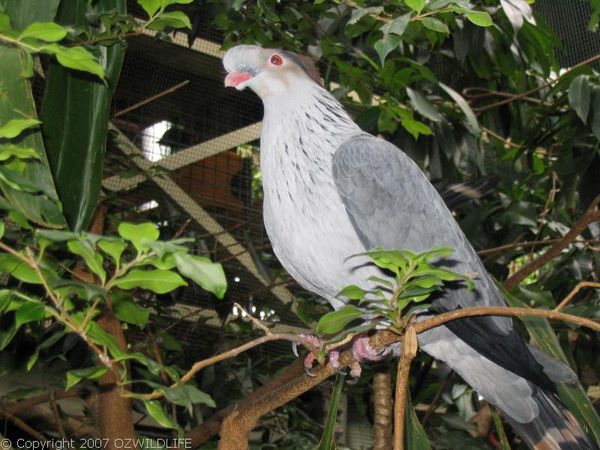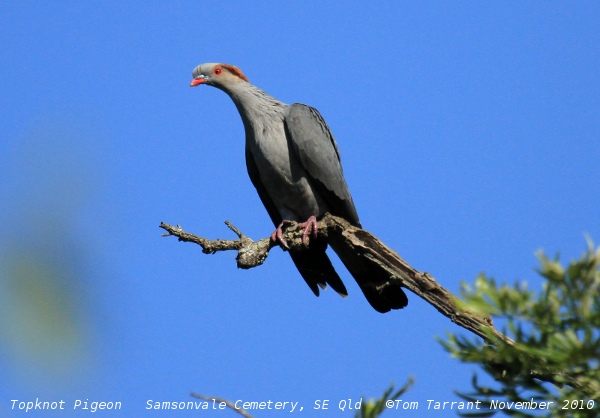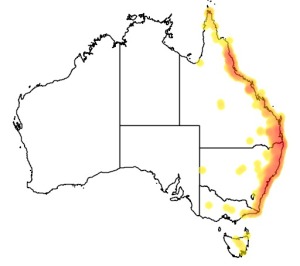Colours
Distinguishing features
It has a pale grey breast, dark grey wings and a slaty-black tail with one light grey band. The beak is red-brown. It also has a flattened, wide and sweptback crest of feathers that commences at the beak to the nape of the neck. The crest consists of grey feathers at the front and brown-red feathers at the back.
The juveniles are plainer in appearance with a brown bill. The tail band is less defined in the immature. (Wikipedia)
Size
- From 40 cm to 46 cm (Length of specimen)
Weight
- From 0.475 kg to 0.6 kg
Wingspan
- Up to 55 cm
Synonyms
Distribution
Distribution and habitat preferences
They are often spotted over rainforests and valleys but are also are found around palm trees, figs, eucalyptus forests and woodlands.
They are completely arboreal. The birds tend to feed on fruits in the forest canopy and often rest on trees above the canopy. They gain water from raindrops from trees. They are occasionally found in open country seeking food. Birds can often be found from Cape York in Queensland to the South Coast of New South Wales near the coast but have been seen as far south as Tasmania and the Gippsland Lakes in Victoria, depending on food availability. (Wikipedia)



